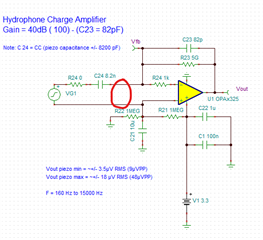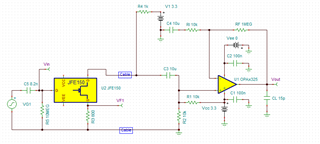Other Parts Discussed in Thread: OPA1678
Hello,
I built this amplifier and it works well even if it is more sensitive using a 120 pF piezo instead of 8.2 nF or adding a 120pF capacitor in series with the 8.2 nF piezo.
Now I receive customer inquiries to connect this hydrophone with coax cable like RG 323 which needs a power over coax connectivity and change the original design.
Do you know how to select the inductors value on both sides of the circuits for such application?
Thank you,
Kind Regards,
Guy






